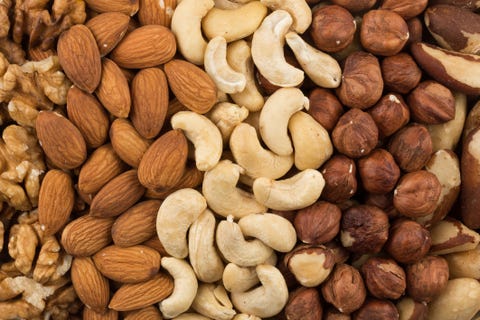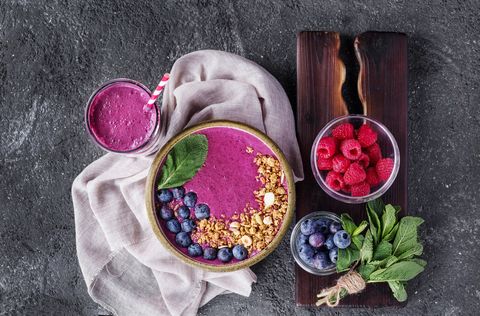Milk, Cheese and Yogurt Pack Your Plate with Nutrients and Goodness
Nutrient-rich dairy products are one of the most affordable sources of nutrition and make healthy eating easy. Together, milk, cheese, and yogurt provide a unique package of nine essential nutrients, including calcium, potassium, phosphorus, protein, vitamins A, D and B12, riboflavin, and niacin (niacin equivalents).
Bone health is so important because bones provide structure for the body, protect organs and act as support for muscles and tissue. They can better perform these functions when they are strong. There is much emphasis on ensuring good bone health for growing children but adults need it too. It’s not too late to take care of your bones as an adult. Adults up to age 50 need 1,000 mg of calcium a day and up to 1,200 mg when older. You can easily satisfy this requirement for bone health with low fat milk, which contains 305 mg of calcium in each cup.
Reputable health information sources point to the nutritional value of milk as an important part of bone health. People who don’t drink milk are at greater risk of developing osteoporosis because they are missing the calcium and other nutrients in milk necessary for strong bones. You can also satisfy your calcium requirement with healthy dairy foods. Talk to your doctor if you are worried about your bone health or think you might be at risk for osteoporosis. Your doctor will examine you and run tests to determine the health of your bones. He will also tell you how you can keep your bones strong and healthy.
Dairy products may also contribute to lower blood pressure and reduce the risk for cardiovascular disease and type 2 diabetes. More specifically, research shows the low-fat Dietary Approaches to Stop Hypertension (DASH) eating plan—which emphasizes dairy, fruits and vegetables and whole grains and is supported by the Dietary Guidelines for Americans—may help manage blood pressure.
Dairy products, together with milk, contribute the nutrients required to complete a healthy diet. Health experts also point to dairy products as a daily necessity. But what are dairy products? What is dairy?
What is Dairy?
With the number of food items being compared to dairy or loosely referred to as dairy products, you might ask “What is dairy?” Dairy is any product made from cow’s milk, such as cheese, yogurt and butter. There are dairy products made from goats and sheep milk, yet these foods do not measure up to the nutrition found in cow’s milk. Cow’s milk, and healthy dairy products, provide the dairy nutrition necessary for a balanced diet and bone health. Products marketed as “milk alternatives” have many more ingredients, are more processed and do not deliver the nine essential nutrients milk and dairy products do.
Learn how to shop smarter and properly store dairy products to ensure your family gains the nutritious benefits of dairy products and reduce food waste!
Dairy Products List
A dairy products list would include well-known items like cheese, butter, yogurt, ice cream, cream and buttermilk. Consider creating a dairy products list of your own that contains you and your family’s favorites and other dairy products you would like to try. This can be helpful on grocery shopping trips. With so much variety in the dairy aisle, you can find types that fit individual taste preferences, as well as nutritional needs.
Click on the pictures below to learn about these nutrient-rich, healthy dairy foods and their role in building strong bones, a healthy diet, and more.
Milk, Flavored Milk and Milk Alternatives:
Facts about Fat and Nutrients
While milk varies in fat and calorie levels, every type — from whole, low-fat or fat-free to chocolate — delivers nine essential nutrients (calcium, potassium, phosphorus, protein, vitamins A, D and B12, riboflavin and niacin).
The addition of flavoring and sugar does not take away any of these nutrients. Although flavored milks have added sugars, they account for less than 50 calories per serving — a small amount compared to how many nutrients it can provide both children and adults. Almost one-half of the sugar is naturally occurring lactose which is found in all milk.
The body is able to better absorb and digest the essential amino acids found in dairy protein as compared to soy, wheat, almond or rice proteins. Compared to most milk alternatives, cow’s milk also has higher amounts of and more absorbable calcium, making cow’s milk a great choice for supporting bone and muscle health.


